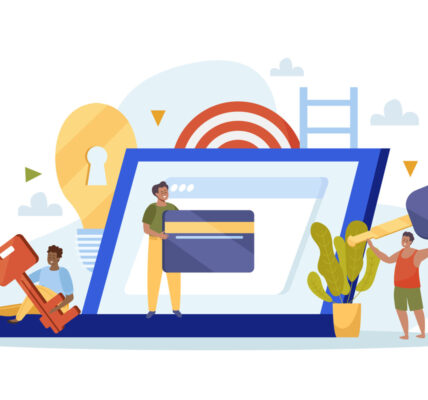How to Enhance Your Business’s Visibility and Ranking on Google Maps in 2025
In the digital age, local visibility is crucial for any business that wants to attract customers within its geographic area. Google Maps, being one of the most powerful tools for local discovery, plays a vital role in ensuring businesses appear when potential customers search for services or products nearby. With the constant evolution of Google’s algorithm, businesses must optimize their Google Maps presence to stay competitive. In 2025, the emphasis is on local SEO, relevance, engagement, and user experience. This guide will take you through the key strategies to enhance your business’s visibility and ranking on Google Maps.
1. Complete Your Google Business Profile
The first and most important step to ranking higher on Google Maps is to claim and optimize your Google Business Profile (GBP). This is your business’s digital representation on Google, and it’s crucial that every field is accurately completed.
Key Tips for Optimizing Your Google Business Profile:
- Accurate Business Information: Make sure your business name, address, phone number (NAP), and website URL are consistent and accurate. This consistency across the web helps Google validate your business and increases trust.
- Categories: Choose the most appropriate primary and secondary categories for your business. Categories help Google understand what your business does and serve it to the right audience. Don’t overcomplicate it; choose categories that truly reflect your core business services.
- Business Hours: Ensure that your business hours are up-to-date. If you’re open on holidays or have special hours, make sure to note these as well.
- Service Areas: If you serve customers in multiple areas, include your service areas in your profile to ensure your business shows up in a wider range of local searches.
- Add Photos and Videos: Visual content can make a big difference. Upload high-quality images of your business, products, staff, and interior/exterior to make your profile more appealing. Videos are also great for showcasing your services or behind-the-scenes operations.
2. Encourage and Manage Customer Reviews
Customer reviews have a significant impact on your Google Maps ranking. Reviews not only enhance your business’s credibility but also influence your ranking. Google uses reviews as a ranking factor because they provide valuable social proof.
How to Encourage and Manage Reviews:
- Ask for Reviews: After providing a service or completing a sale, politely ask satisfied customers to leave a review on Google. Make it easy by providing them with a direct link to your Google Business Profile.
- Respond to Reviews: Respond to both positive and negative reviews promptly. Acknowledge positive feedback and address any concerns raised in negative reviews. This shows potential customers that you care about their experience and are proactive in resolving issues.
- Leverage Positive Reviews: Highlight positive reviews in your marketing materials, website, and on social media. This not only builds trust but can also encourage others to leave reviews.
3. Optimize for Local SEO
Local SEO is a strategy used to improve your online visibility for location-based searches. By optimizing your website and online presence for local search, you increase the chances of appearing on Google Maps when users are searching for businesses like yours.
Local SEO Techniques to Boost Your Visibility:
- Use Location-Based Keywords: Research and incorporate keywords that include your location (city, neighborhood, or region) into your website content, meta descriptions, and title tags. For example, instead of just “plumbing services,” use “plumbing services in [Your City].”
- Create Location-Specific Pages: If you have multiple locations or service areas, create specific landing pages for each location on your website. These pages should include relevant local content, such as customer testimonials from that area or promotions specific to that region.
- Optimize Your Website for Mobile: With more users relying on mobile devices for navigation, it’s crucial that your website is mobile-friendly. A responsive design ensures your site loads quickly and is easy to navigate on smartphones.
- Build Local Citations: Local citations are mentions of your business name, address, and phone number (NAP) on other websites, such as local directories, review sites, and social media platforms. Ensure your NAP information is consistent across all online platforms to enhance your local search ranking.
4. Utilize Google Posts
Google Posts is a feature within your Google Business Profile that allows you to share updates directly with potential customers. These posts appear in Google search results and on Google Maps.
How to Use Google Posts Effectively:
- Post Regularly: Share regular updates about your business, such as promotions, new products, events, or special announcements. Consistency helps keep your profile active and engaging.
- Use Visuals: Posts with images or videos tend to attract more attention. Use high-quality visuals that represent your business and convey your message clearly.
- Include Calls to Action: Encourage users to take action by including a call to action (CTA) in your posts. Whether it’s to “Call Now,” “Learn More,” or “Book an Appointment,” a strong CTA can drive more engagement and conversions.
5. Optimize for Voice Search and Local Search Trends
In 2025, voice search is becoming more popular, with users relying on devices like smartphones and smart speakers to search for nearby businesses. Voice search queries tend to be longer and more conversational, so optimizing for this type of search is essential.
Voice Search Optimization Tips:
- Use Natural Language: Focus on conversational keywords in your content, such as “Where is the nearest coffee shop?” or “Best plumber in [City].” This aligns with how people typically phrase voice search queries.
- Featured Snippets: Structure your content to answer common questions in a concise, direct way. Google often pulls this content for voice search answers, giving you an opportunity to feature prominently.
6. Leverage Local Backlinks
Building local backlinks is another important factor for improving your Google Maps ranking. Backlinks from local blogs, news outlets, and business associations signal to Google that your business is relevant to the area, which can improve your visibility.
Strategies for Building Local Backlinks:
- Partner with Local Businesses: Collaborate with other local businesses for joint promotions or events and request backlinks to your site from their websites.
- Get Featured in Local News: Reach out to local newspapers, magazines, or blogs to get featured. A backlink from a well-respected local publication can boost your authority in Google’s eyes.
- Sponsor Local Events: Sponsor local events or charity initiatives and request that your business is mentioned and linked on the event’s website.
7. Monitor Insights and Analytics
Google Maps and your Google Business Profile provide valuable insights about how customers find and interact with your business. Use this data to refine your strategies and improve your ranking.
Key Insights to Monitor:
- Search Queries: Review the keywords people used to find your business and adjust your content and SEO strategies accordingly.
- Customer Actions: Track the actions users take after finding your business, such as visiting your website, requesting directions, or calling your business.
- Engagement: Measure how often your posts, photos, and reviews are viewed and interacted with.
Conclusion
Enhancing your business’s visibility and ranking on Google Maps in 2025 requires a combination of optimization strategies, including a fully optimized Google Business Profile, consistent engagement with customers, local SEO techniques, and leveraging insights. By focusing on local relevance, user engagement, and providing accurate, up-to-date information, your business can increase its chances of appearing at the top of Google Maps search results, leading to more local customers and business growth.




